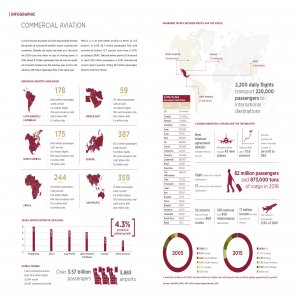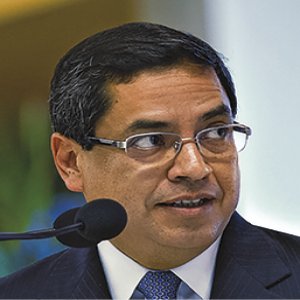Too Much Demand, Not Enough Availability

STORY INLINE POST
Q: What are the main challenges the logistics and air cargo sectors face globally?
A: Demand for freight ton kilometer (FTK) grew 10.4 percent in the first half of 2017 in comparison to 2016, according to IATA. Furthermore, the air cargo segment presented the largest growth rate after the global financial crisis of 2008, representing almost three times the 3.9 percent the industry had grown for the past five years. In comparison, during the first half of 2017, the available freight ton kilometer (AFTK) increased by 3.6 percent when compared to the same period in 2016. Only in June 2017, cargo needs increased 11 percent while capacity grew by 5.2 percent. This growth is in line with the boost in global trade, which has resulted in exports reaching their maximum level in six years. However, we think growth might now have reached its peak.
The inventory rotation rate is no longer falling, meaning that companies no longer have an urgent need to replenish their stock, which in turn diminishes demand for air cargo. That being said, we still have an optimistic view on the industry and expectations for healthy growth in demand of 8 percent for 3Q17. Demand continues to surpass cargo capacity, which puts a strain on all airlines. North American players alone registered an annual FTK growth rate of 12.7 percent but only 3 percent in AFTK. The 9.3 percent increase registered in FTK in June boosted these results mainly because of the deceleration observed during 2016.
Logistics companies now face the challenge of meeting the market’s demands. To manage that, they need to create collaborative operative models that ease commercial fluxes among regions while meeting current expectations in terms of precision, speed and effectivity toward the client. Digitalization will be a prerequisite for success and the winning players will be the ones that know how to make the best out of all new technologies such as data analysis, process automation and the Internet of Things. According to data from DGAC, FedEx Express México manages a total of 42,543 tons in regular international cargo, which puts the company as a leader among North American companies participating in the air cargo segment. We expect that the growth in ecommerce and the development expectations for SMEs will continue to boost our operations.
Q: What hurdles must cargo airlines in Mexico beat in terms of local infrastructure, customs and regulations?
A: Lack of infrastructure is definitely one of the main challenges for the industry. Cargo concentration has generated delays and saturation in the country’s main airports including AICM, Guadalajara and Cancun. For this reason, many companies have opted for the acquisition of a fleet with an increased cargo capacity. According to information from IATA, cargo volume is expected to reach 55.78 million tons globally by the end of 2017, growing from the 53.9 million tons registered in 2016. Only in Latin America, growth is expected to reach 4.8 percent.
Regarding customs and regulations, there are many hurdles Mexico must address. Digital customs would simplify operations following optimal security standards for efficient trade. Similarly, homologation of standards across the country’s customs agencies would offer more clarity and security to all companies. Learning to take advantage of all of Mexico’s free-trade agreements would also boost commercial activities for companies with international operations.
Q: What has been Mexico’s role in FedEx’s global strategy and what have been your main achievements in this market?
A: Mexico is a key market for FedEx both regionally and globally. So much so, that the country is now among the 10 most important countries for the company; a significant achievement considering FedEx’s participation in over 220 countries and territories. Our goal and commitment to Mexico is to keep offering solutions that contribute to its economic and competitive development.
Investment is also key in our development strategy in the country. In 2016, we inaugurated our Logistics Center, which required an investment of over US$20 million. Meanwhile, in 2017 we celebrated the start of operations in our new service station in Morelia, Michoacan. We are constantly growing our points of shipment network and we currently have over 1,300 points throughout the country.
Q: What advantages can FedEx Express offer to the Mexican market, considering it is the biggest cargo airline in terms of tonnage?
A: We have a complete service portfolio in Mexico that combines national and international services as a logistics operator. We have over 6,000 employees throughout the country, operating in 84 service stations, a national hub, our national Logistics Center, plus 44 regional centers and 1,300 points of shipment. Our clients also enjoy the availability of 1,500 vehicles and 10 daily international flights departing from Guadalajara, Toluca, Monterrey, Queretaro and Merida. This infrastructure allows us to offer support, access, flexibility and coverage to our clients, along with the best transit, collection and delivery times.
Q: What led you to open a new service station in Morelia?
A: We want to support the growth and development of large companies and SMEs across the country. For this reason, we invest in infrastructure that helps us to be closer to our clients so they can have access to our entire solutions portfolio. The new station in Morelia will improve our transit times in shipments to Michoacan and it will allow us to handle 50 percent more cargo volume in an efficient way.
Q: What technological innovations has FedEx implemented to improve its logistics practices?
A: Data availability is one of the pillars for efficient logistics operations. FedEx connects its clients with the company’s inner systems so they can have access to information related to their shipments, estimated times of arrival and merchandise descriptions including weight and volume. Integration with our clients helps us plan weight and balance in our aircraft, prepare for customs paperwork and speed up delivery times in international shipments. Tracking is fundamental in our operation, from the moment the package is collected to its final delivery. FedEx was a pioneer in shipment tracking in the 90s. Since then, clients have been able to know the exact location of their shipment through a private data network interconnected to each one of our cargo operators.
Nowadays, FedEx’s website is a complete platform of logistics solutions that helps clients create, monitor, control and manage shipments. It includes an online database called Global Trade Manager with paperwork and documentation necessary to export and import cargo to and from 58 countries. Moreover, we implemented a virtual assistant service in 2016 to offer an enhanced experience to all our customers. This feature uses machine learning processes to guide clients through the website and help them find the right tool or piece of information to make their international logistics process easier, check their account or simply keep track of a shipment. The company also implemented its Electronic Trade Solutions service in key Latin American markets including Mexico to help clients transfer all necessary documents for customs operations from Mexico to over 80 other countries.
Q: What strategies has FedEx implemented to increase its participation in the Mexican market?
A: Alliances and acquisitions like the one of Multipack have been fundamental in the development of FedEx’s presence in Mexico. We also have alliances with the Corporate Mexican Council for Foreign Trade, Investment and Technology (COMCE), the National Entrepreneur Institute (INADEM) and many state governments. We sign collaboration agreements with these institutions to ensure the economic development of SMEs in states like Chiapas, Michoacan and Guanajuato through preferential rates and personalized training. We have analyzed the Mexican market for 27 years with the goal of identifying the country’s main needs and logistics challenges. This has helped us strengthen our value proposition and adapt our pricing strategy in favor of our clients and their own growth plans.
We want to have our clients as our main priority and that is why we recently created our Customer Experience division, currently in charge of analyzing, evaluating and caring for each and every one of our interactions with our clients. We are already reaping the benefits of this new venture and we expect to grow our market participation with more of these initiatives.
Q: What are FedEx’s growth expectations for the Mexican market in 2018?
A: Our main objective for 2018 is to keep growing hand in hand with our clients. Our latest investments will help us have a stronger presence in the market and even though there are definite areas of opportunity for the logistics sector to develop in Mexico, our operative strategy coupled with a strong and competitive portfolio will open the doors to a prosperous future for FedEx and its clients.
























